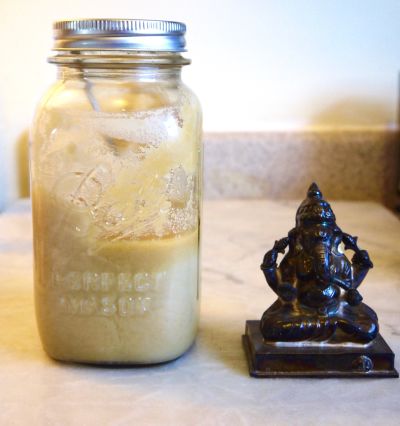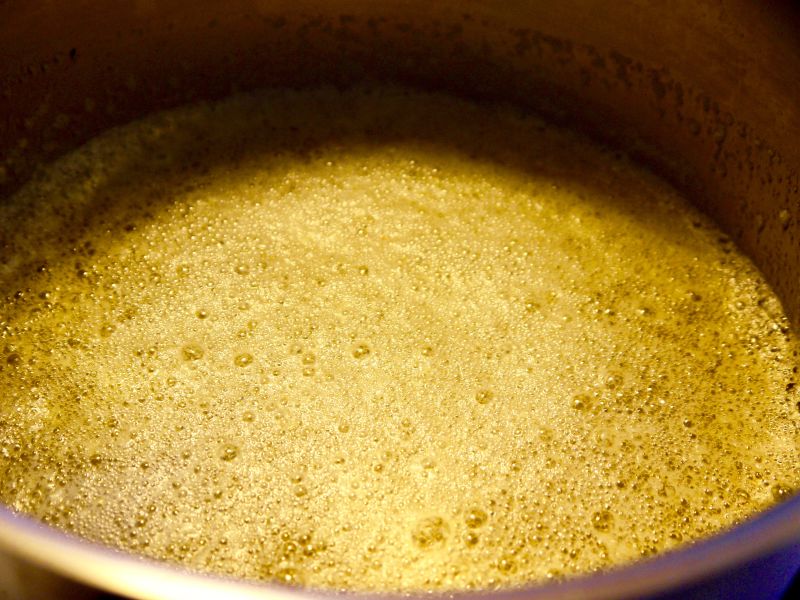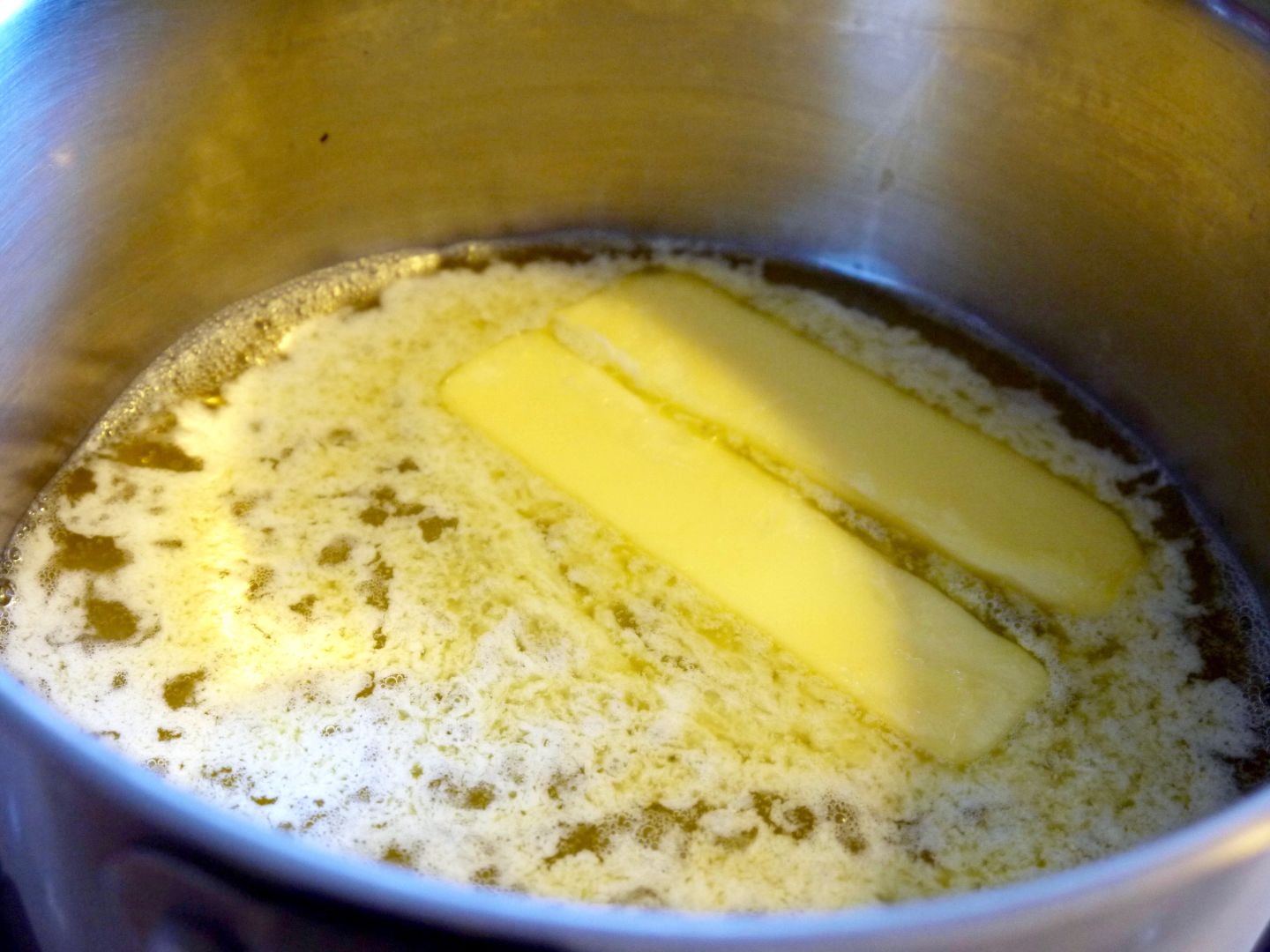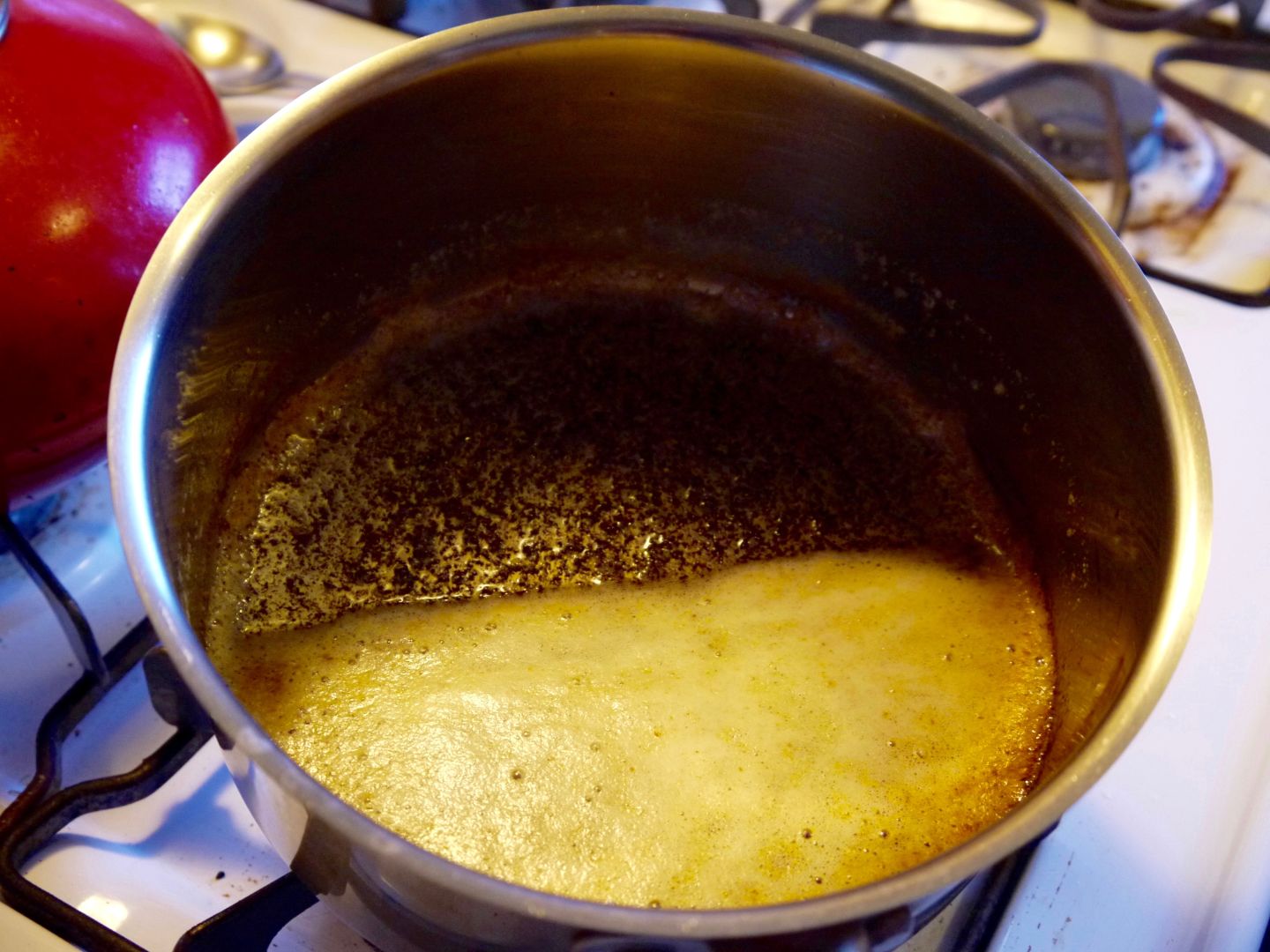Ghee, or Indian clarified unsalted butter, is delicious and easy to make at home. Regular butter is transformed through a sacred cooking process that evaporates the water and separates the milk solids. Known as “liquid gold” in India, this pure fat has been used for centuries for medicinal and ceremonial purposes. And it's prized in the kitchen for its high smoking point, nutty flavor and digestibility.

I recently spent the afternoon in the kitchen of Vinita Jacinto, a chef and former instructor at the California Culinary Academy, to learn more about ghee. I first heard raves about ghee from my fellow yoga teacher friends. But when I saw the steep price tag of a jar at Whole Foods, my DIY instincts kicked in and I vowed to learn how to make it.
Ancestral roots
When I arrived at Jacinto’s home in El Cerrito, she welcomed me with a big hug and handed me a mug of her homemade chai tea. As we sipped our drinks, Jacinto recounted her childhood memories in Calcutta, India.
“Growing up, we saw the whole dairy cycle. Twice a day, the milkman came to our house and brought fresh milk. If I hugged the jar, it was still warm because he milked it 20 minutes before coming to my door. Right after the milk arrived, it was boiled; the cream that rose to the top was collected. That cream is churned to make fresh butter and that butter is then made into ghee. Every day we had fresh butter on the table and every week fresh ghee.”

Jacinto explained that in India, cows are sacred beings, thus dairy foods are also treated with the utmost respect. In her household, there were designated pots that were used to only boil milk and make ghee. The usual multitasking in the kitchen was paused during the ghee making process. And to further honor the sacredness of the fat, the elder women of the family would traditionally chant mantras while cooking to infuse the liquid gold with blessings.



